

A Complete Guide to 10K Resistor Color Code
Catalog
What is a 10K Resistor?Quick Reference of Resistor Color CodeInterpreting Resistor Color CodesCracking the 10k Resistor Color CodeHow to Interpret Resistor Color Codes?How to Interpret Resistor Color Codes?How to Interpret the 10K Resistor Color CodeSummaryHow to Utilize the 10K Resistor Color Code Calculator?Typical Resistor Color Codes and Their ApplicationsApplications of 10k Ohm ResistorAlternative Marking Systems for ResistorsImportance of 10k Resistors in Electronic DesignFrequently Ask QuestionsRelated ArticlesWhat is a 10K Resistor?
A 10K resistor is a fundamental electrical component that has a resistance value of 10,000 ohms (or 10 kilohms). It plays a crucial role in electronic circuits by controlling voltage levels and the flow of current. The term "10K" indicates that the resistance is 10,000 ohms, with the "K" representing "kilo," which equals 1,000. The key features of 10K resistors include: Resistance value: 10,000 ohms; Power ratings: Typically available in 1W, 2W, 1/2W, and 1/4W; Tolerance: Common tolerances are ±1%, ±2%, and ±5%; The temperature coefficient usually falls within the range of 50 to 200 ppm/°C.
Due to their versatility and ability to provide a good balance between voltage drop and current limiting in different circuit configurations, 10K resistors are widely used.
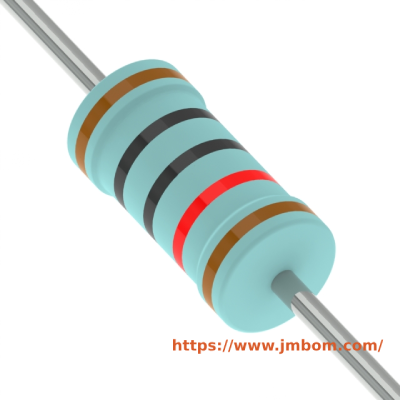
10K Resistor Color Code
Quick Reference of Resistor Color Code
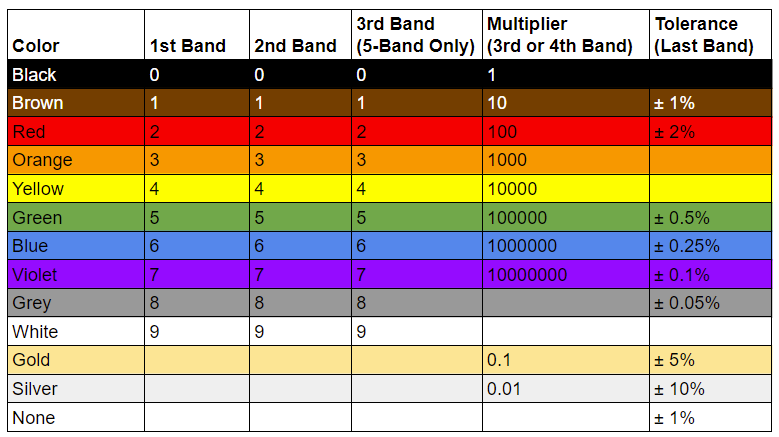
Interpreting Resistor Color Codes
Resistor casings usually feature three to six bands that indicate resistance, tolerance, and occasionally the temperature coefficient of resistance (TCR). These bands are read from left to right. The reading direction is not always obvious. In some cases, the tolerance band is printed 1.5–2 times wider than the other bands to show the reading direction. There might also be a noticeable gap between the tolerance band and the other bands. Gold or silver bands, if present, are always at the right end, as they are never used for significant digits. For precise resistance values, it is advisable to refer to the manufacturer's documentation or use a multimeter.
In a three-band resistor, the first two bands signify the first two significant digits, and the third band represents the multiplier. The tolerance is always ±20%, as there is no separate tolerance band.
For the most common type, the four-band resistor, the first two bands correspond to the first two significant digits. The third band indicates the multiplier, and the fourth band shows the tolerance.
In a five-band resistor, the first three bands represent the first three significant digits. The fourth band is the multiplier, and the fifth band indicates the tolerance.
Cracking the 10k Resistor Color Code
To easily identify 10K ohm resistors, refer to the color chart mentioned earlier. Below is an image of a 10K ohm resistor for reference. It is important to note that the size of the resistor affects its power rating, with larger sizes generally indicating higher power ratings. The body color of the resistor has no inherent significance.

The color stripes denote the following information for a 10K ohm resistor:
The first band, which is brown, indicates a digit that is identical to the second digit, shown by the second band in black, and that digit is 0; The third band, which is orange, represents the multiplier, namely 1000 or 1K; The gold fourth band signifies a tolerance of ±5%. Accordingly, the resistance value can be determined by the following formula: (10K ±5% ohm) = (1) (0) (x1000) (±5%).
How to Interpret Resistor Color Codes?
You can swiftly determine the value of a resistor by examining its color bands. The difficulty of printing alphanumeric codes on small resistors prompted the useful development of resistor color coding in the early 1920s.
The color bars signify the following details concerning a 10K ohm resistor:
The first band in brown denotes a digit that matches the second digit, indicated by the second band in black, which is 0; The multiplier, equivalent to 1000 or 1K, is shown by the third band in orange; The tolerance, indicated by the fourth band in gold, is ±5%. As a result, the resistance value can be calculated using the following formula: (10K ±5% ohm) = (1) (0) (x1000) (±5%).
How to Interpret Resistor Color Codes?
By examining the color bands on a resistor, you can swiftly determine its value. The difficulty of reading printed alphanumeric codes on small resistors prompted the development of color-coded resistors in the early 1920s, which proved to be a valuable innovation.
When deciphering resistor color codes, a common question is "where do I begin?" Here are some visual cues that can assist you:
Band Grouping: The color bands on resistors are typically not evenly spaced. Most of the time, they are grouped with a space between them. The largest gap is usually before the tolerance band. To read the resistor correctly, the larger group of bands should be on the left side, allowing you to read from left to right.
Tolerance Indicator: The typical tolerance for a resistor is either 5% or 10%. A gold band signifies a 5% tolerance, while a silver band indicates a 10% tolerance. It's important to note that metallic colors are never the first in a resistor's color code. The tolerance values are clearly visible on the right side of the resistor. Once again, read the resistor from left to right.
Starting Band: While it's not an absolute rule, the first band is generally the one closest to the end of the resistor. If you're unsure where to start, you can refer to other hints.
Using a multimeter can help you identify the likely resistance value, and you can adjust your interpretation accordingly. The resistor color code can be read by following these guidelines:
Each color corresponds to a numerical value that represents the resistance:
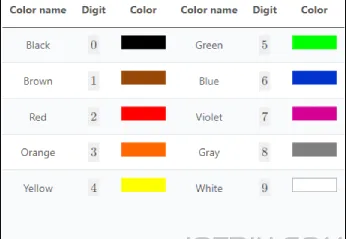
The initial two or three bands on the left are color-coded. Following these initial bands, we encounter the multiplier band, which is denoted by the subsequent color codes:
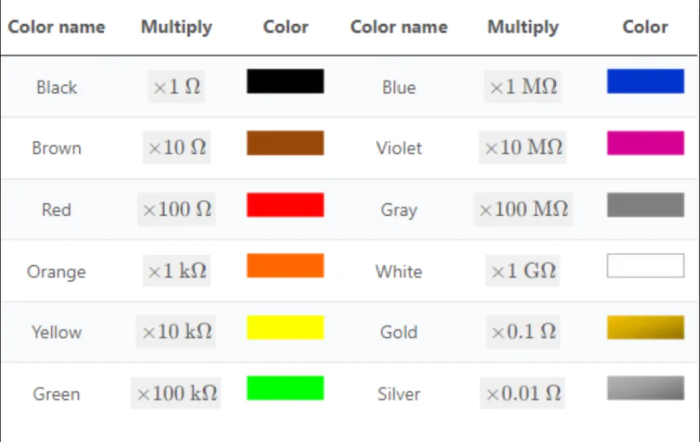
This band multiplies the value from the preceding bands by a factor of ten. Each color corresponds to a specific multiplication factor for the preceding bands. To represent these multipliers, prefixes such as giga, mega, and kilo are utilized. Alternatively, scientific notation can be employed to describe small values, for example, 10^9 (gigaohm). A tolerance band is featured in the last color band (bands 4, 5, and 6) for all types of resistors. This usually indicates the normal distribution of component resistance as a percentage:
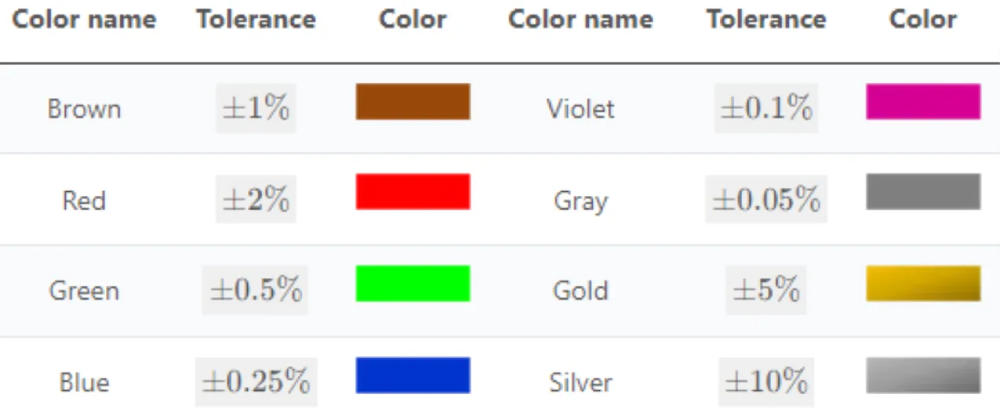
For resistors with four or five bands, the color interpretation remains the same. The temperature coefficient for six-band resistors is discussed in a separate section. An extra band on the resistor indicates the temperature coefficient.
How to Interpret the 10K Resistor Color Code
Resistor color codes consistently consist of digits, a multiplier, and a tolerance value. In the case of a four-band resistor, each band has a unique function:
| Color | 1st Band (Digit) | 2nd Band (Digit) | 3rd Band (Multiplier) | 4th Band (Tolerance) |
| Black | 0 | 0 | 1 | |
| Brown | 1 | 1 | 10 | ±1% |
| Red | 2 | 2 | 100 | ±2% |
| Orange | 3 | 3 | 1,000 | |
| Yellow | 4 | 4 | 10,000 | |
| Green | 5 | 5 | 100,000 | ±0.5% |
| Blue | 6 | 6 | 1,000,000 | ±0.25% |
| Violet | 7 | 7 | 10,000,000 | ±0.1% |
| Gray | 8 | 8 | 100,000,000 | ±0.05% |
| White | 9 | 9 | 1,000,000,000 | |
| Gold | 0.1 | ±5% | ||
| Silver | 0.01 | ±10% | ||
| None | ±20% |
Band One – First Digit: This initial band signifies the first digit of the resistance value, with the color brown indicating the value 1.
Band Two – Second Digit: The second band specifies the second digit of the resistance value, colored black, which corresponds to 0. This digit is positioned to the right of the first digit from band one, resulting in the number 10.
Band Three – Multiplier: This band amplifies the digits obtained from bands one and two by a factor determined by its color. The multiplier is equal to 10^n, where 'n' is the value of the band color. In this case, the third band is orange, representing the number 3. Thus, the multiplier is 10^3 = 1,000. Therefore, the combined resistance value from these colors is 10 x 1,000 Ω = 10,000 Ω, which can also be written as 10kΩ.
Band Four – Tolerance: This band denotes the tolerance level of the resistor, typically 5% (indicated by a gold band) or 10% (indicated by a silver band). In this example, a gold band is used, signifying a tolerance of 5%.
Thus, the total resistance value is 10kΩ ± 5% Ω.
4-Band vs. 5-Band vs. 6-Band 10K Resistor Color Code
| Resistor Type | 1st Band | 2nd Band | 3rd Band | 4th Band | 5th Band | 6th Band | Description |
| 4-Band | Brown (1) | Black (0) | Orange (×1,000) | Gold (±5%) or Silver (±10%) | N/A | N/A | Two significant digits, multiplier, tolerance. |
| 5-Band | Brown (1) | Black (0) | Black (0) | Orange (×1,000) | Brown (±1%) or Red (±2%) | N/A | Three significant digits, multiplier, tolerance. |
| 6-Band | Brown (1) | Black (0) | Black (0) | Orange (×1,000) | Brown (±1%) or Red (±2%) | Blue (±10 ppm/°C) or Violet (±5 ppm/°C) | Three significant digits, multiplier, tolerance, temperature coefficient. |
Summary
4-Band Resistor: The most widely used type in typical applications. It includes two significant figures, a multiplier, and a tolerance band. The 10K resistor is denoted by the colors Brown, Black, Orange, and Gold (or Silver), indicating a resistance of 10,000 ohms with a tolerance of ±5% (or ±10%).
5-Band Resistor: It offers greater accuracy by incorporating an extra significant digit. For instance, a 10K resistor is denoted by the colors Brown, Black, Black, Orange, Brown (or Red). Here, the initial three bands signify the significant digits, followed by a multiplier band and a tolerance band. This kind of resistor is utilized in applications requiring higher precision, usually with tolerances of ±1% or ±2%.
6-Band Resistor: This is akin to the 5-band resistor but includes an additional sixth band that indicates the temperature coefficient. It is employed in settings where maintaining temperature stability is crucial. A 10K resistor in this category would feature the colors Brown, Black, Black, Orange, Brown, and Blue (or Violet). These colors represent three significant digits, a multiplier, tolerance, and a temperature coefficient of ±10 ppm/°C (or ±5 ppm/°C).
How to Utilize the 10K Resistor Color Code Calculator?
Take, for example, a 10k ohm resistor with the color sequence Brown-Black-Orange-Red, which is a 4-band resistor. To elaborate, the first band is brown, the second is black, the third band (orange) indicates the multiplier, and the fourth band (red) denotes the tolerance. Given a tolerance of 2%, the calculated resistor value is 10K ohms. The color code for a 100-ohm resistor in a 4-band configuration is depicted in the image below. We encourage you to explore our additional resources on 4k7 resistors and 1k ohm resistors!
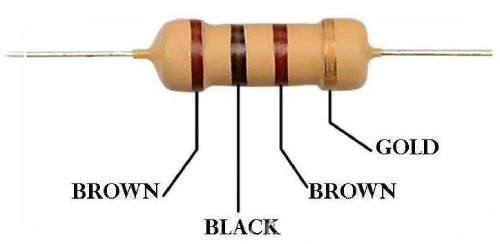
Typical Resistor Color Codes and Their Applications
| Color Bands | Resistance Value | Tolerance | Common Uses |
| Brown-Black-Black-Red-Brown | 1kΩ (1,000 ohms) | ±1% | Used in pull-up/pull-down resistors, LED circuits |
| Red-Red-Brown-Gold | 220Ω (220 ohms) | ±5% | Current limiting for LEDs, voltage dividers |
| Orange-Orange-Brown-Gold | 330Ω (330 ohms) | ±5% | Signal termination, transistor biasing |
| Yellow-Violet-Red-Gold | 4.7kΩ (4,700 ohms) | ±5% | Op-amp circuits, voltage dividers |
| Green-Blue-Brown-Gold | 560Ω (560 ohms) | ±5% | Filtering, impedance matching |
| Blue-Gray-Red-Gold | 6.8kΩ (6,800 ohms) | ±5% | Audio circuits, analog circuits |
| Brown-Black-Orange-Gold | 10kΩ (10,000 ohms) | ±5% | Common in potentiometers, analog and digital circuits |
| Red-Red-Orange-Gold | 22kΩ (22,000 ohms) | ±5% | Feedback resistors, op-amp gain control |
| Yellow-Violet-Orange-Gold | 47kΩ (47,000 ohms) | ±5% | Signal processing, filter circuits |
| Brown-Black-Yellow-Gold | 100kΩ (100,000 ohms) | ±5% | High-impedance circuits, sensor interfaces |
| Red-Red-Yellow-Gold | 220kΩ (220,000 ohms) | ±5% | Timing circuits, voltage dividers |
| Brown-Black-Green-Gold | 1MΩ (1,000,000 ohms) | ±5% | High-voltage circuits, oscillators |
Applications of 10k Ohm Resistor
The 10k resistor has a wide range of important applications in the field of electronics and is commonly utilized in breadboards as well as diverse prototyping scenarios. Some of its well-known applications are as follows:
Voltage Divider Networks:
In the realm of electronics, voltage divider networks play a crucial role in stepping down higher voltages to more manageable levels. The 10k resistor is highly compatible with voltage divider networks. By incorporating it, it helps to ensure that devices operate optimally by shielding circuit functions from the adverse effects of high-power voltage or current. Given its small and compact size, it is ideally suited for use in circuit protection devices.
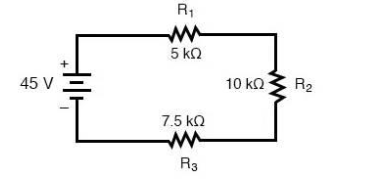
Breadboards and Perf Boards
Breadboards, also known as plug blocks, are valuable tools for constructing temporary circuits. Perf boards, or strip boards, are essential for electronic prototyping. These two types of boards often serve as the foundation for many printed circuit boards (PCBs). The compact size of the 10k ohm resistor allows it to be easily integrated into these boards. It is a convenient choice for your next project, as it fits snugly into a breadboard with minimal movement.
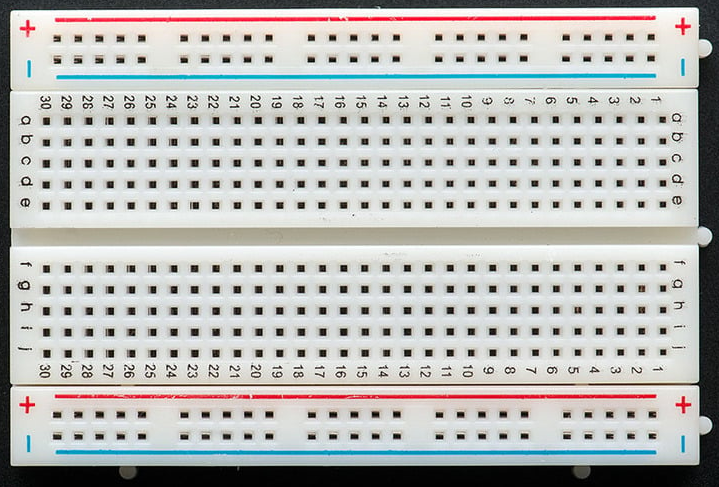
Current Limiters:
Ensuring proper operation of various circuit components requires controlled current flow. In such cases, resistors play a vital role, with 10k ohm resistors being particularly effective as current limiters. This type of resistor is beneficial for restricting the amount of current flowing through a circuit. It essentially restricts the current to allow only the desired voltage to pass through. This precise control guarantees optimal performance of your circuits.
Setting Bias and Operating Points:
Biasing is a fundamental concept in electronics, especially in transistor applications and amplifier circuits. The operating point of transistors and other active components is often set using a 10k resistor. To achieve proper amplification and signal processing, these components must operate within their linear or intended regions, which can be accomplished by providing them with a specific bias voltage or current.
Filtering and Time Constants:
Resistors with a value of 10k are integral components in resistor-capacitor (RC) circuits, shaping the frequency response and determining time constants. By carefully selecting resistor values, you can control the cutoff frequencies of filters and influence how quickly a circuit responds to input changes. These time constants are crucial in applications such as time delay, signal smoothing, and audio filtering circuits.
Compatibility and Component Availability:
The availability and compatibility of components can also influence the choice of resistor values, including 10k. Designers often opt for standard resistor values because they are readily available from suppliers or within their local area. This ensures that there will be no delays or issues in sourcing the required resistors.
Power Dissipation:
As electricity flows through resistors, heat is generated. Operating resistors above their specified power ratings can cause excessive heat, leading to overheating and potential failure. Therefore, it is essential to consider the power rating of a resistor when selecting a 10k resistor—or any resistor, for that matter. This specification, typically stated in watts, should not be exceeded to prevent damage and ensure reliable operation.
These diverse applications highlight the versatility of 10k resistors in the field of electronics, demonstrating their value as essential components for controlling currents, setting reference voltages, and ensuring the proper functioning of a wide range of electronic devices and circuits.
Temperature Sensors:
Temperature sensors are essential for achieving accurate temperature control in appliances such as ovens and thermostats. They are often used in conjunction with 10k resistors. These sensors work by generating voltage signals that vary with temperature within voltage divider networks, enabling precise regulation. They also have the advantage of compensating for component drift, ensuring stable circuit performance. In battery management, they monitor temperature to enable controlled charging, which extends battery life and enhances safety. In industrial processes, temperature sensors and 10k resistors are used to maintain accuracy in systems like furnaces, ovens, and chemical reactions, thereby optimizing manufacturing operations. Together, they provide accuracy, reliability, and security for a variety of electronic applications.
Digital Logic:
Ten thousand ohm resistors are highly valuable components that are crucial for the stable and reliable functioning of digital circuits. They are commonly employed as pull-up and pull-down resistors, which enhance circuit stability and serve as effective barriers against ambiguous states in input pins. When used as pull-up resistors, these resistors are vital in communication protocols such as SMBus and I2C, facilitating bidirectional data transmission. Additionally, 10k resistors simplify the design of systems incorporating buttons and switches, ensuring consistent logic levels. They also bolster protection against noise and voltage spikes in sensitive digital systems, safeguarding microcontroller inputs.
Overall, the precision and versatility of the 10k resistor make it an indispensable component in the realm of electronics. Whether you are working on a digital microcontroller application, a complex analog circuit, or a basic LED project, the 10k resistor allows for precise control of currents and voltages. This, in turn, enhances the reliability and efficiency of electronic systems and devices.
Tips for Quickly Identifying 10K Resistor Color Code
| Identification Method | Detailed Explanation |
| Memorize Key Color Bands | The color sequence for a 10K resistor starts with Brown (1), Black (0), followed by Orange (×1,000). The first three color bands are always Brown, Black, and Orange. |
| Remember Common Tolerances | The fourth band is typically Gold (±5%) for standard resistors. For more precise resistors, the fifth band in a 5-band resistor may be Brown (±1%) or Red (±2%). |
| Use Mnemonics | Use mnemonics like "Bad Boys Order Gold" to recall Brown, Black, Orange, and Gold for a 4-band 10K resistor. |
| Spot the Pattern in Resistor Packs | In resistor kits, 10K resistors are among the most common and are often grouped together. Look for the repeated pattern of Brown, Black, and Orange bands. |
| Practice Regularly | The more you handle resistors, the easier it becomes to identify the 10K color code by memory. |
| Check with a Multimeter | When in doubt, verify the resistor’s value with a multimeter. This ensures you have a 10K resistor, especially if the color bands are unclear. |
Alternative Marking Systems for Resistors
| Marking System | Detailed Explanation |
| Numerical Marking System | High-precision resistors, especially in Surface-Mount Technology (SMT), often use a numerical code instead of color bands. |
| Three-Digit Code | The first two digits represent the significant figures, and the third digit represents the multiplier (similar to color codes). Example: A code of 103 represents 10 × 1,000 = 10,000 ohms. |
| Four-Digit Code | The first three digits represent the significant figures, and the fourth digit represents the multiplier. Example: A code of 1002 represents 1,000 × 100 = 100,000 ohms. |
| EIA-96 Marking System | This system is often used for SMT resistors and involves a two-digit code followed by a letter. The digits correspond to a standard value from a table, and the letter represents the multiplier. Example: 18C corresponds to a standard value (via lookup table) multiplied by 100. |
| Printed Values on Large Resistors | For larger resistors, manufacturers may print the resistance value directly (e.g., 10K for 10,000 ohms), eliminating the need to interpret color codes. |
| Ohm Symbol or “K” Notation | Some resistors, especially power resistors, may be marked with an ohm symbol (Ω) or use "K" and "M" to denote kilo-ohms and mega-ohms. Example: A resistor marked with 10KΩ directly indicates a 10,000-ohm resistor. |
Importance of 10k Resistors in Electronic Design
| Application Scenario | Detailed Explanation |
| Common Use in Voltage Dividers | 10K resistors are frequently used in voltage divider circuits to reduce a higher voltage to a lower one. They are chosen for their balance between power dissipation and precision. |
| Biasing Transistors | In transistor circuits, 10K resistors are often used to set the biasing conditions, ensuring that the transistor operates correctly in its intended region (cut-off, active, or saturation). |
| Pull-up and Pull-down Resistors | 10K resistors are widely used as pull-up or pull-down resistors to ensure a known logic level (high or low) on a digital input pin when no other active driver is connected. |
| Filtering and Timing Circuits | 10K resistors are integral in RC (Resistor-Capacitor) filtering and timing circuits due to their common value, which pairs well with capacitors to set time constants in the millisecond range. |
| Impedance Matching | 10K resistors are often used in impedance-matching applications to ensure that different circuit stages interface correctly, minimizing signal reflection or loss. |
| Load Resistors | In many analog circuits, 10K resistors act as load resistors, ensuring that the circuit behaves predictably by providing a known load. |
| Ease of Calculation | The 10K value is a convenient number, making mental calculations easy when designing circuits, particularly for those working with standard 5% or 1% resistor tolerances. |
| Accessibility and Cost | 10K resistors are among the most commonly produced and stocked, making them cost-effective and easily accessible for both hobbyists and professionals. |
Frequently Ask Questions
What is a 10K resistor?
A 10K resistor is an electrical part that offers a resistance of 10,000 ohms (Ω). It is frequently utilized in diverse electronic circuits for purposes like current limiting, voltage dividing, and biasing.
How can I figure out the color code for a 10K resistor?
The color code for a 10K resistor is as follows: First Band: Brown (1), Second Band: Black (0), Third Band: Orange (Multiplier of 1,000), Fourth Band: Gold (Tolerance of ±5%).
What is the significance of the colors on a 10K resistor?
Each color on a resistor represents a particular digit or multiplier: Brown: 1; Black: 0; Orange: Multiplier of 1,000; Gold: Tolerance of ±5%. This indicates that a 10K resistor has a nominal resistance of 10,000 ohms, with a tolerance allowing for a variation of ±5%.
Why does the tolerance matter for a 10K resistor?
Tolerance shows the extent to which the actual resistance can differ from the specified value. For a 10K resistor with a tolerance of ±5%, the actual resistance can vary from 9,500 ohms to 10,500 ohms. This is vital in applications requiring precise resistance values.
In which applications are 10K resistors frequently used?
10K resistors are extensively used in several applications, such as: Pull-up and pull-down resistors in digital circuits, Voltage dividers for analog signal processing, Biasing for transistors in amplifier circuits, Current limiting for LEDs, Feedback networks in operational amplifier circuits.
How can I recognize a 10K resistor in a circuit?
To recognize a 10K resistor, look for the color bands: Brown, Black, Orange, and Gold. Additionally, many resistors have their values printed directly on them, often as "10K" or "10KΩ."
What is the typical power rating of a 10K resistor?
The most common power rating for a 10K resistor is 1/4 watt (0.25W), but they are also available in other ratings such as 1/8W, 1/2W, or even 1W, depending on the application and required power handling.
Is it possible to use a different resistor value instead of a 10K resistor?
While you can use other resistor values, it’s crucial to consider the specific needs of your circuit. Using a resistor with a significantly different value may impact the circuit's performance, such as changing current flow or voltage levels.
How can I test a 10K resistor?
To test a 10K resistor, follow these steps: Set a multimeter to the resistance (Ω) setting; Connect the multimeter probes to each end of the resistor; Read the value on the multimeter. A good 10K resistor should read between 9,500Ω and 10,500Ω, considering the ±5% tolerance.
Are there various types of 10K resistors?
Yes, 10K resistors come in different types based on their construction and material, including: Carbon Film Resistors: Common and cost-effective; Metal Film Resistors: Provide better accuracy and stability; Wirewound Resistors: Suitable for high-power applications. These variations can influence performance characteristics like temperature coefficient and noise.
Related Articles
Analog to Digital Converter:Everything You Need to Know
Introduction to DC to AC Converter
Introduction to CR1616 Battery Equivalent
A Complete Guide to Reed Switches
A Complete Guide to Integrated Amplifier
Microprocessor vs. Integrated Circuit:Which is Best?
Introduction to CR1616 Battery Equivalent
CR1616 Battery Equivalent:What You Need to Know
Subscribe to JMBom Electronics !













